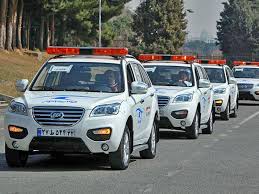Vehicles are an integral part of modern society, facilitating transportation for people and goods. They come in various forms, each designed for specific purposes and environments. This article explores the different types of Autovermietung in Caleta de Fuste, their functions, and emerging trends that are shaping the future of transportation.
1. Types of Vehicles
Vehicles can be broadly categorized into several types based on their design, purpose, and energy source:
A. Land Vehicles
- Cars
- Passenger Cars: Designed for personal transportation, these vehicles come in various styles, including sedans, hatchbacks, and SUVs.
- Electric Vehicles (EVs): Gaining popularity for their eco-friendliness, EVs run on electricity stored in batteries. Examples include Tesla and Nissan Leaf.
- Trucks
- Light Trucks: Used for personal and commercial purposes, they include pickup trucks and delivery vans.
- Heavy Trucks: Designed for transporting goods over long distances, these include semi-trailers and freight trucks.
- Buses
- Used for public transport, buses can carry a large number of passengers. Variants include city buses, school buses, and tour buses.
- Motorcycles and Scooters
- Two-wheeled vehicles suitable for individual transport, offering maneuverability and fuel efficiency.
B. Water Vehicles
- Boats
- Small watercraft used for recreation, fishing, and transport. Examples include sailboats and motorboats.
- Ships
- Larger vessels designed for long-distance travel and cargo transport, including cargo ships and cruise liners.
- Submarines
- Specialized vessels designed to operate underwater, used by the military and for scientific research.
C. Air Vehicles
- Airplanes
- Aircraft designed for travel through the air, ranging from small private planes to large commercial jets.
- Helicopters
- Rotary-wing aircraft used for various purposes, including emergency services, military operations, and news coverage.
- Drones
- Unmanned aerial vehicles (UAVs) used for photography, delivery, and surveillance.
2. Functions of Vehicles
Vehicles serve multiple functions, making them essential for daily life:
- Transportation: The primary function is to move people and goods from one location to another.
- Emergency Services: Vehicles like ambulances, fire trucks, and police cars play crucial roles in public safety.
- Recreational Use: Many vehicles, such as motorcycles and boats, are used for leisure activities.
- Economic Impact: Vehicles contribute significantly to the economy by facilitating trade and commerce.
3. Future Trends in Vehicle Technology
The future of vehicles is being shaped by technological advancements and societal changes. Some key trends include:
A. Electric and Hybrid Vehicles
With growing environmental concerns, there is a shift towards electric and hybrid vehicles that reduce carbon emissions. Governments worldwide are incentivizing EV adoption through tax credits and infrastructure development.
B. Autonomous Vehicles
Self-driving technology is on the rise, promising safer and more efficient transportation. Companies like Waymo and Tesla are at the forefront of developing autonomous vehicles that can navigate without human intervention.
C. Shared Mobility
Ride-sharing and car-sharing services are transforming how people think about vehicle ownership. Platforms like Uber and Lyft enable users to access transportation without the need to own a vehicle.
D. Connected Vehicles
The integration of the Internet of Things (IoT) in vehicles allows for real-time communication between vehicles and infrastructure. This connectivity enhances safety, traffic management, and navigation.
4. Conclusion
Vehicles play a crucial role in our lives, shaping how we travel, conduct business, and connect with one another. As technology continues to evolve, the future of vehicles will likely be characterized by sustainability, automation, and connectivity. Embracing these changes will be essential for creating a more efficient and environmentally friendly transportation system.
